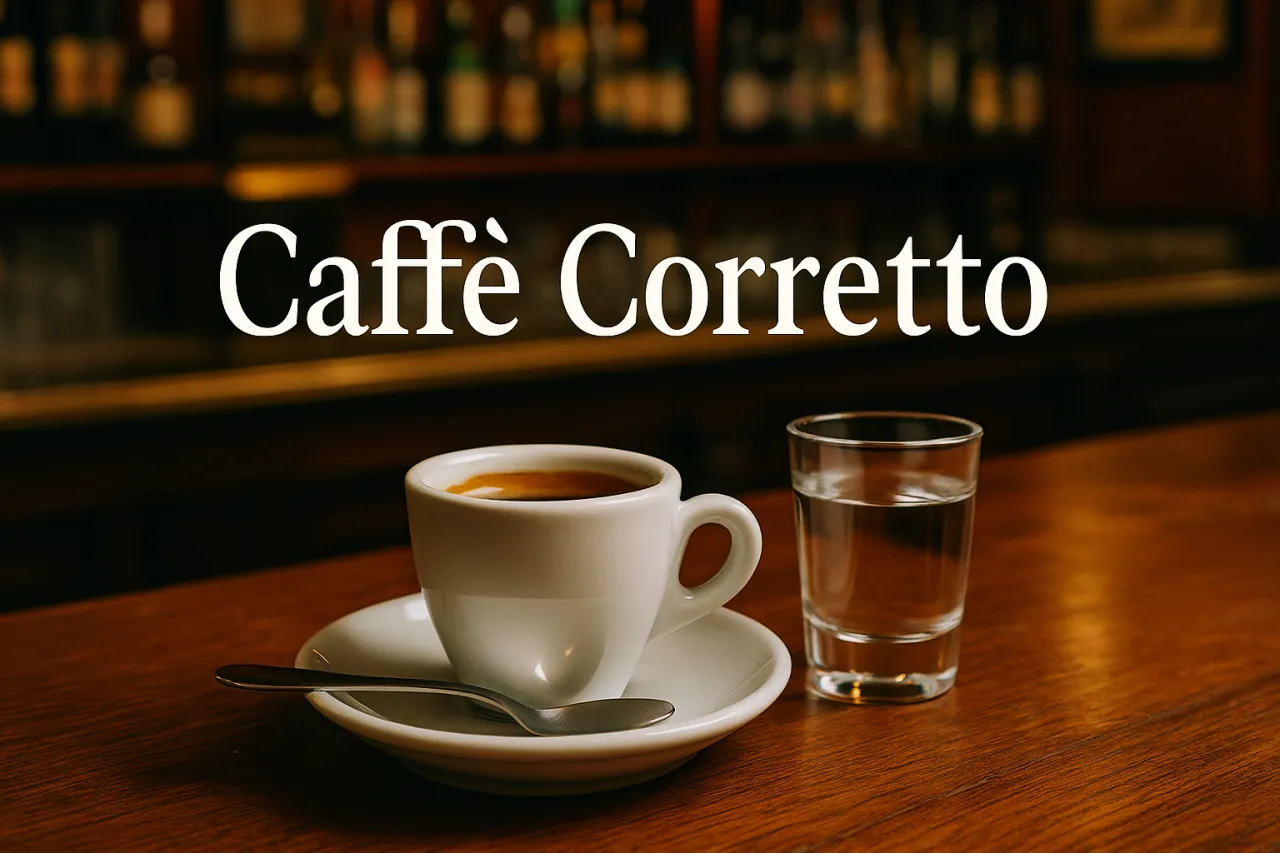Caffè Corretto: Coffee Corrected, Culture Preserved

By Dave C & Boozeopedia AI Workflow
See how we write our articles
My dad had a simple routine: a short espresso with a splash of Ramazzotti Sambuca. It wasn’t fancy. It wasn’t complicated. But it meant something to him, and now it means something to me.
What is Caffè Corretto?
Caffè corretto literally means “corrected coffee” in Italian. It’s just espresso with a small amount of liquor added–usually grappa, sambuca, or brandy. It’s common in Italy, especially in older generations or small-town bars. The idea is that the liquor gives the coffee a bit more kick, flavor, or warmth, depending on the type.
The drink became more popular during the 1930s when real coffee was hard to find due to economic restrictions. People started adding spirits to cheap substitutes to make them taste better. Even after coffee became widely available again, the tradition stuck. According to food historian Dr. Diana Garvin, this period of substitution and adaptation is likely when the name caffè corretto took hold. (Source)
Different Ways of Having It in Italy
Even though it’s a simple drink, there are a few regional twists on how it’s made:
-
Northern Italy (especially Veneto) – People often use grappa. Some drink the espresso and then pour grappa into the empty cup to rinse and drink the last bit. That’s called a rexentìn.
-
Marche region – They have a version called Caffè alla Moretta, which includes rum, anise liqueur, and brandy, plus sugar and citrus peel. It’s stronger and a bit more complex.
-
Valle d’Aosta – There's a communal drink called caffè alla valdostana served in a carved wooden cup shared among friends. It includes coffee, grappa, and spices, and it’s often lit on fire before serving.
-
Southern Italy – In places like Campania or Sicily, sambuca or other anise-flavored liqueurs are more common. Sometimes the liquor is added directly to the coffee, and sometimes it’s served on the side.
Why This Drink Matters
Caffè corretto continues to be popular among Italians both in Italy and abroad because it represents more than just a drink–it’s a ritual. For many older Italians, it’s tied to memories of post-meal conversations, bar culture, and a sense of unhurried tradition. In small-town cafés, it’s not unusual to see someone order a quick espresso with a splash of something strong as a digestif or mid-morning break. The drink balances the intensity of espresso with the warmth of alcohol, which is both comforting and practical.
Among Italian immigrants and their descendants, especially in North America, caffè corretto often lives on as a small way of keeping cultural habits alive. It’s a familiar ritual, usually passed down through observation, not instruction. Anecdotally, it’s common to hear someone say, “My nonno always drank his espresso with grappa,” or “My dad liked sambuca in his coffee.” These preferences become personal customs.
Its simplicity is also part of its staying power. You don’t need special tools or rare ingredients. All it takes is espresso and a bit of your preferred spirit–making it accessible and adaptable across generations and countries.
My Father’s Version
My dad was born in Duronia, a commune in Campobasso, Italy. He left when he was 12, so he didn’t grow up drinking caffè corretto, but he adopted the habit later in Canada.
His version was simple: espresso with a splash of Ramazzotti Sambuca. He didn’t care about the technique or presentation–he just liked the flavor. Sometimes it was after lunch, sometimes in the afternoon. It became part of his daily rhythm.
That was his preferred method, and he stuck with it.
Try It Yourself
If you want to try making your own caffè corretto, here are a few common ways:
- Sambuca (like my dad used) – A strong anise flavor. Just add a small pour into hot espresso.
- Grappa – Clean, dry, and strong. This is the classic version in northern Italy.
- Brandy or Cognac – Milder than grappa, with more sweetness.
- On the side – Some people prefer to drink the liquor separately and sip it alongside the coffee.
No need to overthink it–just mix what you like.
Rest in Peace, Pa ❤️